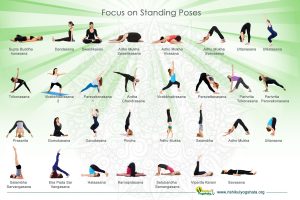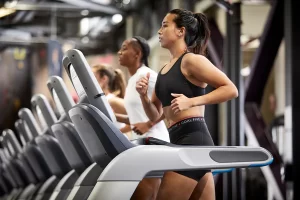
Beginner’s Guide to Yoga for Flexibility and Relaxation
Introduction
Yoga is an ancient practice that has gained immense popularity in recent years. It is a combination of physical postures, breathing exercises, and meditation that promotes flexibility, strength, and relaxation. Whether you are a complete novice or looking to deepen your understanding of yoga, this beginner’s guide will provide you with valuable insights on how to incorporate yoga into your daily routine for improved flexibility and overall well-being.
Benefits of Yoga
Yoga offers numerous benefits for both the body and mind. Here are some of the key advantages of practicing yoga:
Flexibility: Regular yoga practice helps improve flexibility by stretching and lengthening muscles, leading to increased range of motion in joints.
Strength: Yoga poses require you to support and hold your body weight, which builds strength in various muscle groups.
Stress Relief: Yoga incorporates relaxation techniques and deep breathing, which can help calm the mind and reduce stress.
Improved Posture: Yoga poses focus on proper alignment, helping to develop better posture and prevent common back and neck problems.
Mental Clarity: Through meditation and mindfulness practices, yoga promotes mental clarity, increased focus, and inner peace.
Getting Started
If you’re a beginner, it’s important to start with basic yoga poses and gradually progress as your body becomes more flexible. Here are a few tips to get you started:
Find a Qualified Instructor: Joining a yoga class taught by a qualified instructor ensures proper guidance and reduces the risk of injury.
Invest in a Yoga Mat: A good quality yoga mat provides traction and support, making your practice more comfortable and safe.
Start Slowly: Begin with gentle stretches and basic poses like Mountain Pose, Child’s Pose, and Downward-Facing Dog.
Listen to Your Body: Respect your body’s limitations and avoid pushing yourself too hard. Yoga is about finding balance and honoring your individual journey.
Be Consistent: Set aside regular time for your yoga practice to experience the full benefits. Even short sessions can make a difference.
Yoga for Flexibility
Yoga is renowned for improving flexibility. Here are a few poses that target specific muscle groups:
Forward Fold: Stand with your feet hip-width apart and slowly fold forward, reaching towards your toes. This pose stretches your hamstrings and back.
Triangle Pose: Step your feet wide apart, aligning your front heel with the arch of your back foot. Extend your arms, tilt sideways, and reach one hand towards the floor and the other hand towards the ceiling. This pose targets the hamstrings, inner thighs, and shoulders.
Pigeon Pose: From a tabletop position, slide one knee forward towards your wrist, allowing your back leg to stretch back. This pose deeply opens the hips and glutes.
Yoga for Relaxation
Yoga is also an excellent way to promote relaxation and reduce stress. Try these poses to unwind after a long day:
Corpse Pose: Lie on your back, close your eyes, and relax your entire body. Focus on deep breathing as you let go of tension and release stress.
Child’s Pose: Sit on your heels, then slowly lower your forehead to the floor, extending your arms in front or alongside your body. This gentle stretch helps release tension in the back and shoulders.
Legs-Up-The-Wall Pose: Lie on your back with your legs resting vertically against a wall. This pose promotes relaxation, improves circulation, and relieves swollen legs and feet.
Remember, the key to a successful yoga practice is consistency and patience. As you progress, you might want to explore different styles of yoga and experiment with longer sessions or advanced poses. Most importantly, listen to your body, be mindful, and enjoy the journey of self-discovery and improved well-being that yoga offers.

